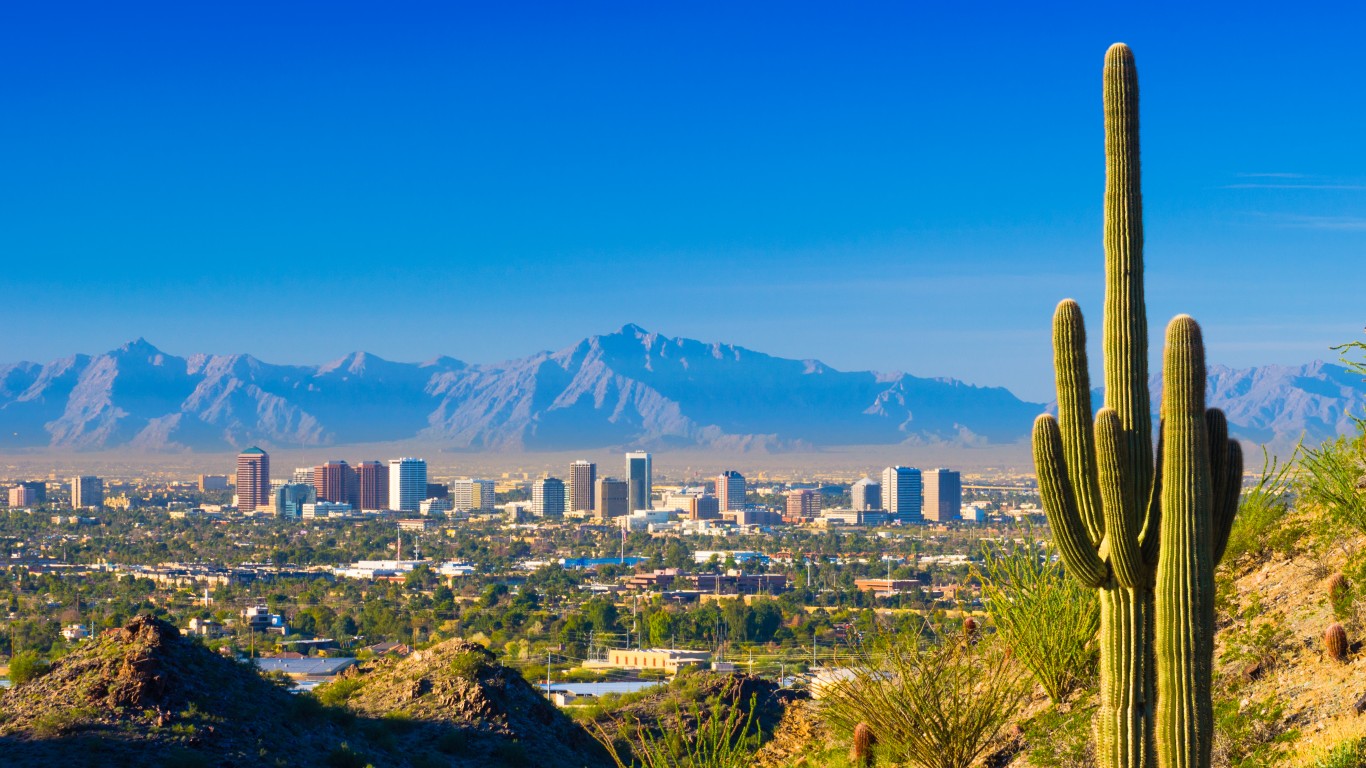
The American Southwest is in the vice of a massive heat wave that covers several states. The all-time U.S. record of 134 degrees Fahrenheit, set in Death Valley, California on July 10, 1913, could even fall. This spike coincides with one of the worst droughts since the government began to keep records. It covers states as far north as Montana, as far west as California and Oregon, and as far south as Arizona, New Mexico and western Texas on the Mexican border, according to the U.S. Drought Monitor. Massive areas of cropland and cattle ranges could be ruined for decades. Among the effects is that the nation’s 10th largest city has temperatures that will approach 120 degrees over the next several days.
[in-text-ad]
Phoenix, the tenth-largest city in the United States, has a population of 5,059,909, which is up over 10% in the past decade. This makes it among the fastest-growing large cities in the country. The population has more than doubled since 1990, when the figure was 2,238,480, and quadrupled since 1970, when it was 1,039,144. Many people move to Phoenix because of the warm, dry weather and the lack of the kind of cold winter in the northern tier of states. These people currently are faced with a city that may be barely habitable during some parts of the summer.
Weather.com forecasts temperatures of 118 degrees in Phoenix Tuesday. It is expected to stay at that level during the daytime for the next three days. Phoenix is also in one of the epicenters of the drought, in an area the Drought Monitor designates as “exceptional drought.” That is the worst kind possible, described as “Exceptional and widespread crop/pasture losses and shortages of water in reservoirs, streams, and wells creating water emergencies.” Nearby, The Telegraph Fire has burned over 104,755 acres and continues to spread rapidly. It is already one of the largest wildfires in state history.
Julie Malingowski, a meteorologist for the National Weather Service, told The New York Times, “There’s no relief overnight, so if people don’t have proper air-conditioning and can’t cool off, there’s not that respite.” Based on weather patterns, the lack of relief during the hottest days likely will go on for years, or longer.
Click here to read about the 50 hottest cities in America.
Are You Still Paying With a Debit Card?
The average American spends $17,274 on debit cards a year, and it’s a HUGE mistake. First, debit cards don’t have the same fraud protections as credit cards. Once your money is gone, it’s gone. But more importantly you can actually get something back from this spending every time you swipe.
Issuers are handing out wild bonuses right now. With some you can earn up to 5% back on every purchase. That’s like getting a 5% discount on everything you buy!
Our top pick is kind of hard to imagine. Not only does it pay up to 5% back, it also includes a $200 cash back reward in the first six months, a 0% intro APR, and…. $0 annual fee. It’s quite literally free money for any one that uses a card regularly. Click here to learn more!
Flywheel Publishing has partnered with CardRatings to provide coverage of credit card products. Flywheel Publishing and CardRatings may receive a commission from card issuers.
Thank you for reading! Have some feedback for us?
Contact the 24/7 Wall St. editorial team.



